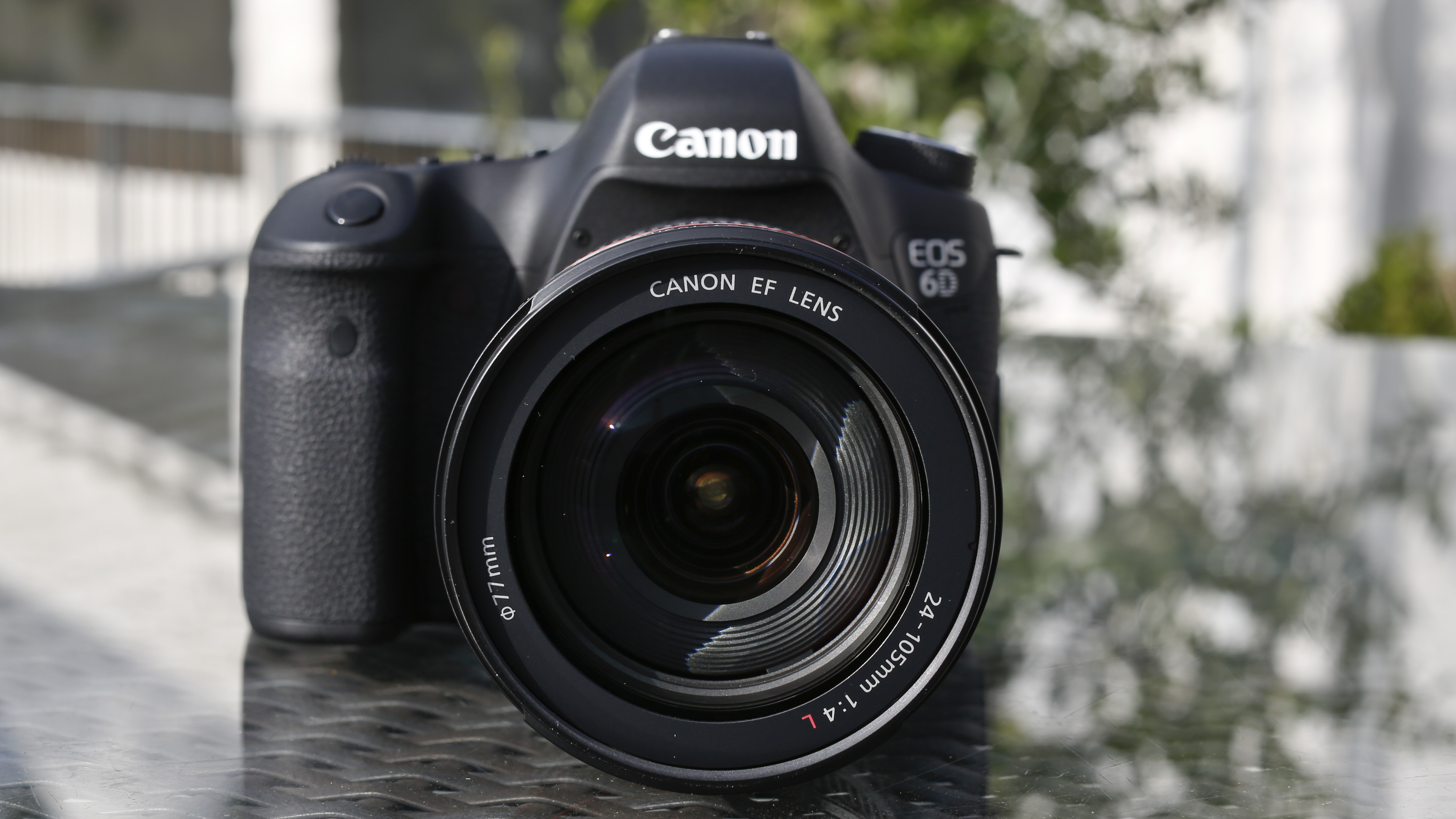Why you can trust TechRadar
Looking at the size and control layout of the Canon EOS 6D quickly confirms that it is a mix of both the Canon EOS 7D and Canon EOS 60D, with the size, weight and control layout being similar to the Canon 60D but with the Canon 7D's movie and stills live view switch on its back.
Although the Canon 6D's weight is the same as the Canon 60D's, it has half a centimetre more on the height and slightly less depth, which means that the grip is a bit deeper. This makes a surprising amount of difference, and means the grip gives better purchase.
A thoughtful button layout means there's instant access to many of the camera's main features, such as AF method, sensitivity and exposure compensation. And settings changes can be made quickly.
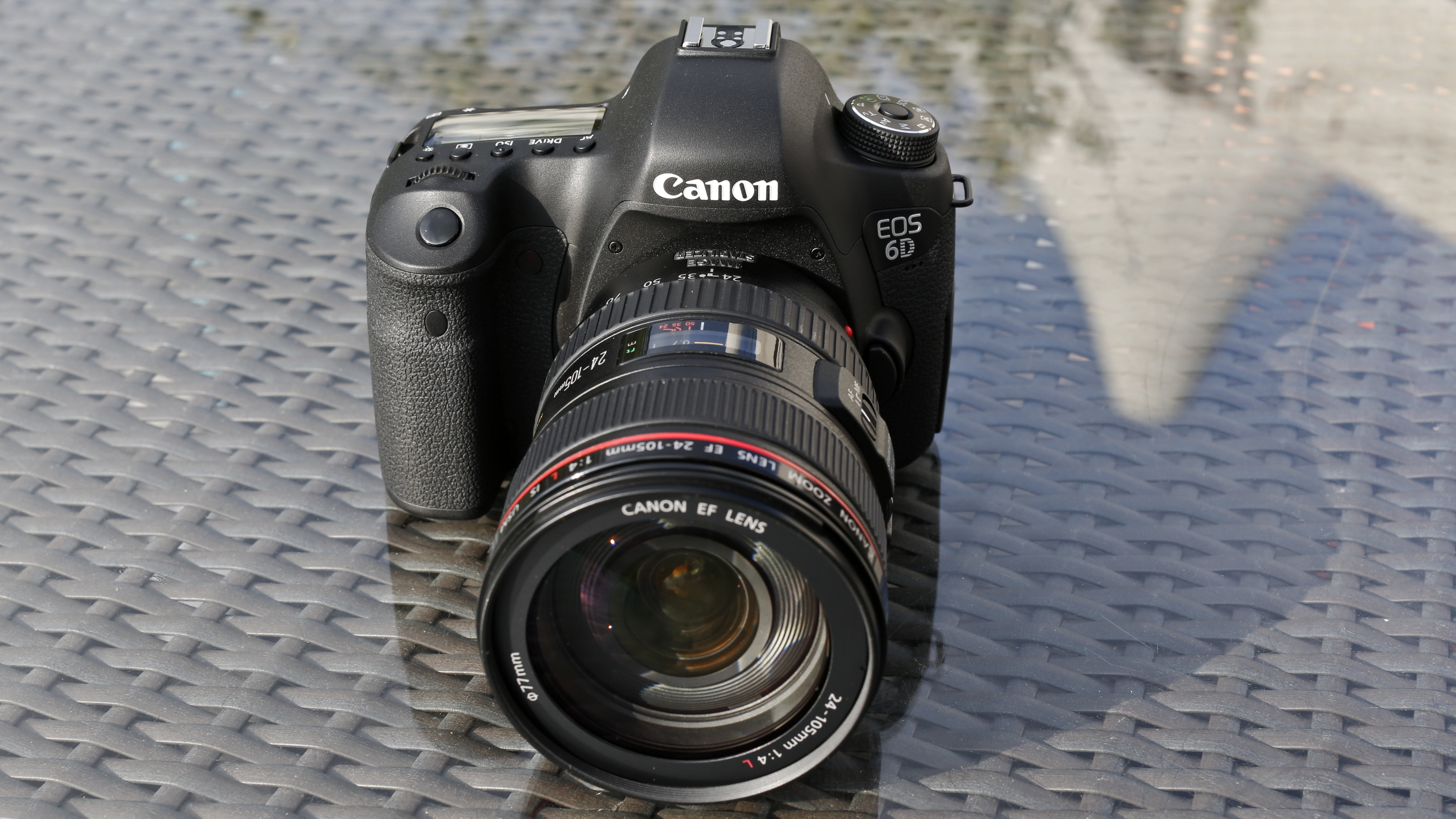
As usual now, many of the key features can be accessed speedily via the quick menu, which is activated with a press of the dedicated button near the thumb rest.
The navigation control on the back of the camera features the same functionality as the EOS 60D, with a rotating outer ring to adjust settings such as aperture or shutter speed, a central directional pad for navigating menus and inner Set button for confirming settings changes.
Its position is ideal both for reviewing images and making settings changes, and when shooting with the camera to the eye, it is within easy reach of your thumb.
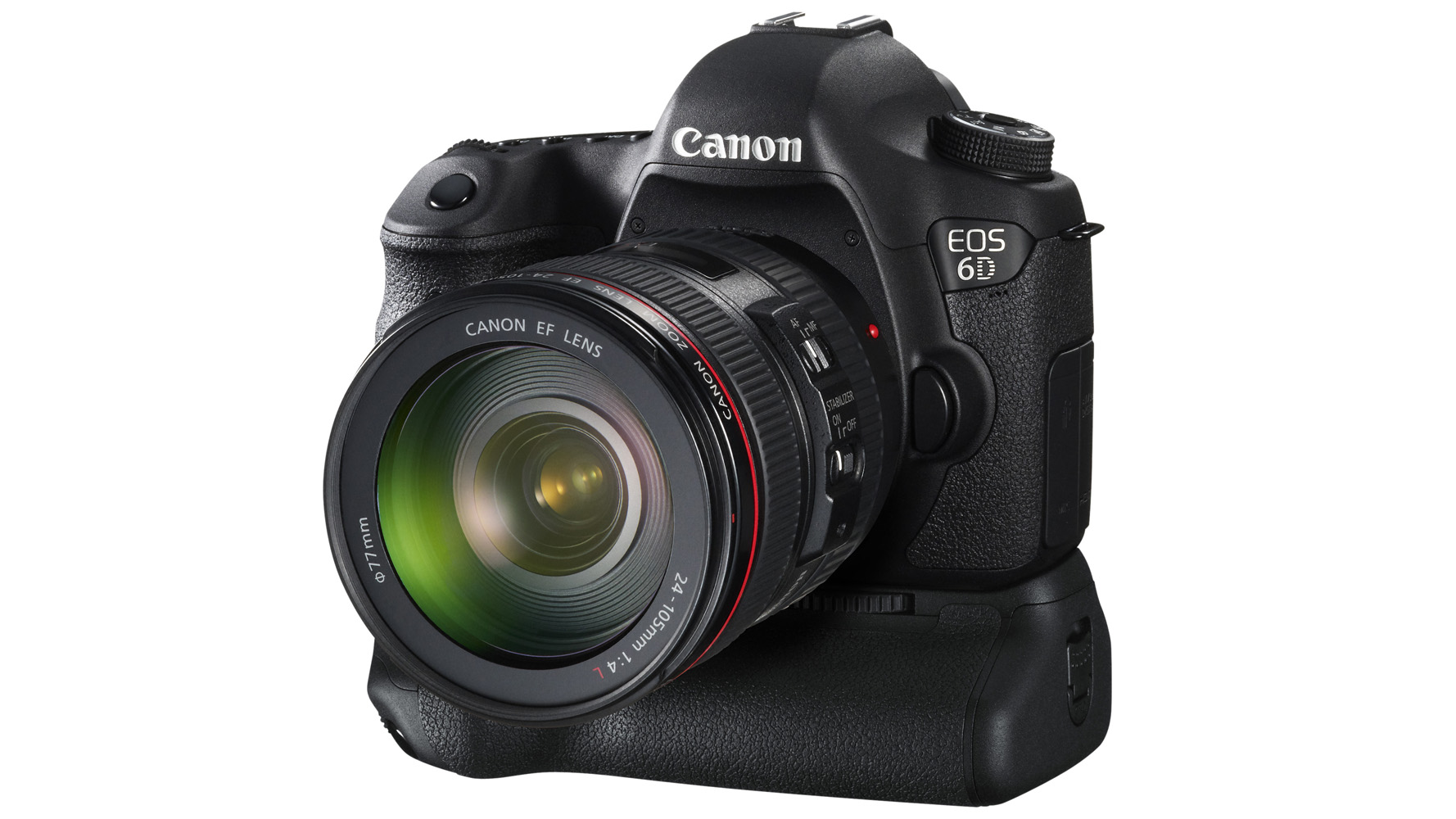
Images may be magnified by pressing the button to the left of the quick menu button, and then rotating the front control dial to zoom in and out, instead of using the two zoom buttons that featured at the top-right of the of the Canon EOS 60D and Canon EOS 7D.
Switch to video live view and the magnify button enables you to zoom in and check focus, which is very useful for manual focus, especially with macro subjects.
The top plate takes the standard EOS approach, featuring direct access buttons to the AF and drive modes, sensitivity (ISO), metering and LCD light settings.
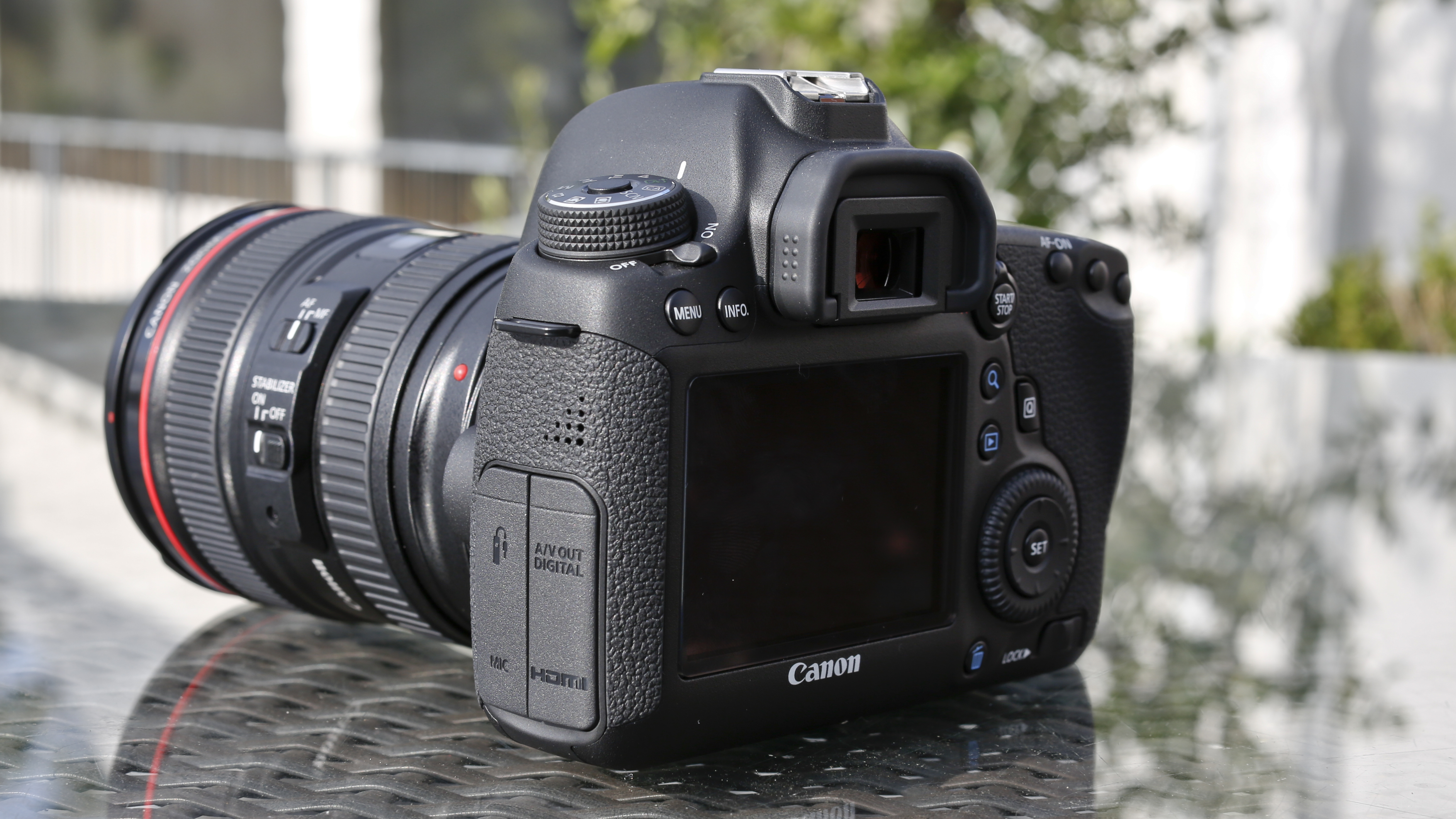
The ISO button that sits in the middle of the group has been moulded with a recessed textured top, making it easier to identify with your finger when you're holding the camera to your eye.
The ISO value is shown in the viewfinder itself, so you can make an informed adjustment, but rather unhelpfully the metering, drive mode and AF options don't display in the viewfinder even when their corresponding button is pressed. This means they can't be adjusted accurately when the camera is held to the eye.
The AF point selection control is in the usual position at the top right above the thumb rest, and the point control itself can be selected using the navigation pad. Alternatively the front control dial can be used to move the point from left to right.
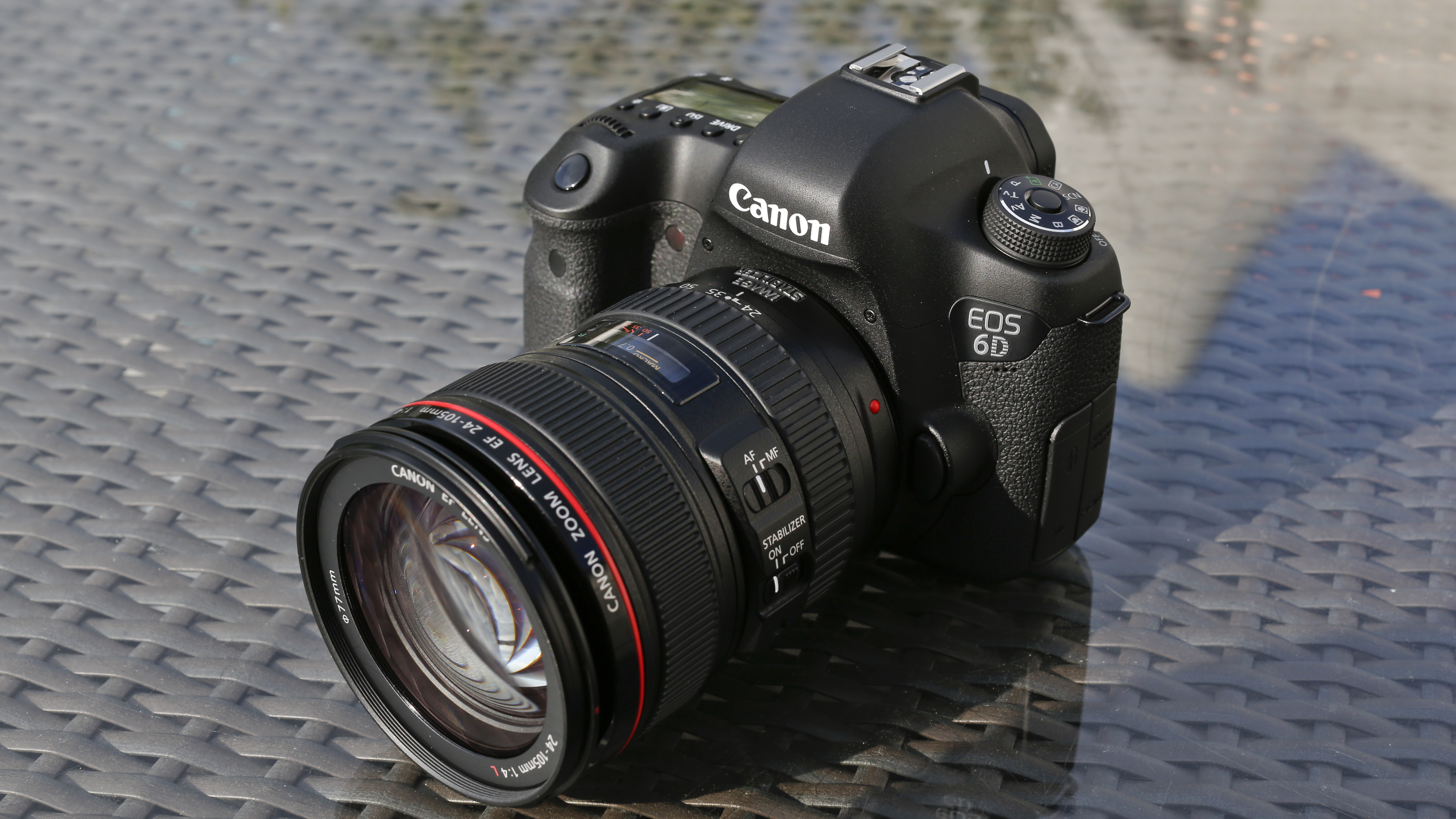
Canon's menus have been expanding, and the Canon EOS 6D features an overwhelming assortment of options. Initially the 15 different screens seems a bit much, but this is due to Canon deciding against scrolling screens and rather giving a full list of options under each menu tab. This makes locating the feature you want far easier.
As with other Canon EOS models, the final tab is a My Menu screen. This is where you can place all of the most common features - we used it to access custom white balance, image quality, mirror lock up and ratings.
Ali Jennings is the imaging lab manager for Future Publishing's Photography portfolio. Using Imatest Master and DxO Analyser he produces the image quality tests for all new cameras and lenses review in TechRadar's cameras channel. Ali has been shooting digital since the early nineties and joined Future's Photography portfolio back in 2003.
